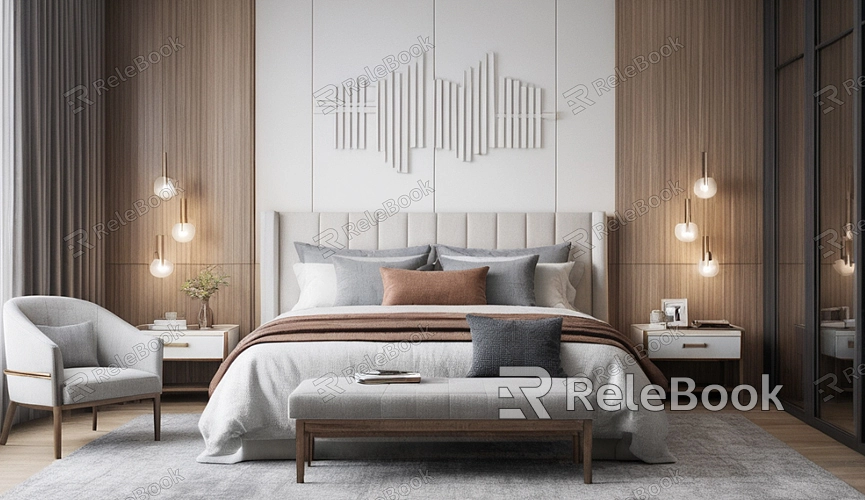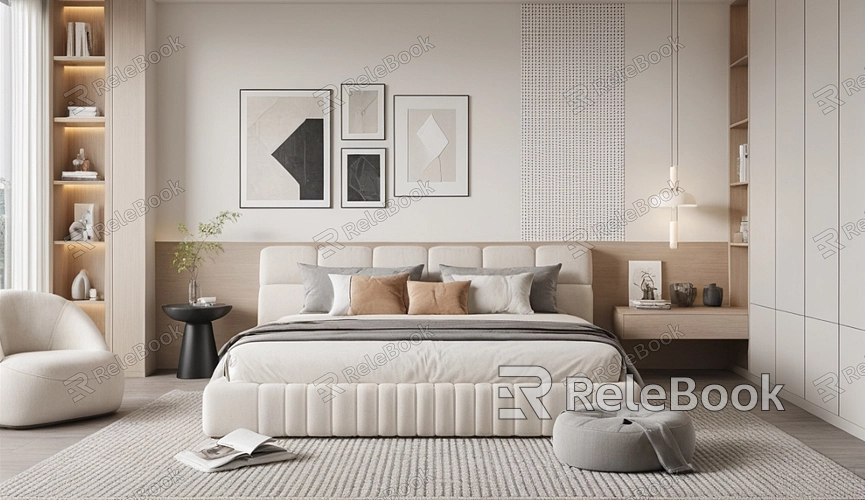What is the Role of 3D Modeling?
In today's rapidly advancing technological landscape, 3D modeling has permeated various aspects of our lives. Whether in film production, game design, product development, or architectural design, the significance of 3D modeling has become increasingly evident. It not only allows for a more intuitive presentation and optimization of designs but also offers endless possibilities for creative implementation. This article will explore the various roles of 3D modeling and answer some common questions to help you better understand the practical applications of this technology.

Applications in Film and Animation Production
3D modeling plays an indispensable role in film and animation production. Traditional animation methods require significant time and manpower, whereas 3D modeling technology can greatly enhance production efficiency. By creating virtual three-dimensional models, directors and producers can have better control over scenes and character portrayals, leading to more realistic and detailed visual effects.
Moreover, 3D modeling helps production teams preview and adjust scenes and characters in the pre-production phase, reducing the complexity of post-production modifications. By simulating different lighting, materials, and animation effects, creators can more accurately grasp the overall style of the project, resulting in higher-quality films and animations.
Importance in Game Design
In game design, 3D modeling also plays a crucial role. Most modern games feature characters, environments, and props created through 3D modeling. Designers use modeling software to create three-dimensional models, which are then imported into game engines to bring every detail to life.
3D modeling not only enhances the visual quality of games but also makes the gaming experience more immersive. Players can explore three-dimensional environments, enjoying a more engaging and realistic gaming experience. Additionally, modeling technology allows designers to make quick adjustments based on player feedback, optimizing game content.

Applications in Product Design and Manufacturing
In product design and manufacturing, the role of 3D modeling is equally significant. Designers create three-dimensional models of products to evaluate them comprehensively before actual production. These virtual models help teams identify potential issues in the design and make necessary adjustments.
Additionally, 3D modeling integrates closely with rapid prototyping technologies. Designers can use 3D printing to convert virtual models into physical prototypes for more tangible testing and validation. This method not only shortens the design cycle but also reduces development costs and enhances the product's market competitiveness.
Applications in Architecture and Urban Planning
The architecture and urban planning fields also heavily utilize 3D modeling technology. Architects create three-dimensional models of buildings and urban environments to present design proposals more clearly. These models help clients better understand the project's actual effect and make necessary modifications.
Moreover, 3D modeling can be used for virtual reality demonstrations in the planning phase of architectural projects. Clients can "walk through" the designed buildings using virtual reality devices, experiencing the spatial layout and environmental ambiance. This immersive experience helps increase the acceptance of design proposals and ensures that the final design meets client needs.
Applications in the Medical Field
In the medical field, 3D modeling demonstrates its unique value. Doctors and medical researchers create three-dimensional models of patients' internal organs and tissues to make more accurate diagnoses and treatment plans. These models provide detailed internal structure information, aiding in the development of personalized treatment strategies.
Additionally, 3D modeling is used to produce customized medical devices and implants. By modeling a patient's body shape, designers can create implants that fit the patient's specific characteristics, improving treatment outcomes and comfort.
3D modeling, as an advanced technology, plays a significant role in various fields. From film production and game design to product development, architectural design, and medical applications, 3D modeling provides more intuitive and effective solutions. It not only enhances work efficiency but also greatly enriches our creative expression.
With the insights provided, you can see the wide applicability and importance of 3D modeling in real-world scenarios. If you’re interested in 3D modeling, visit the Relebook website to download high-quality 3D models and textures to support your creative and design projects.
FAQ
How difficult is it to learn 3D modeling?
The learning curve for 3D modeling can be steep, but there are many resources and tutorials available to help beginners get started. From basic modeling tools to advanced animation and rendering techniques, learning gradually can help you master this technology.
What software can be used for 3D modeling?
There are many software options available for 3D modeling, including Blender, Maya, 3ds Max, and Cinema 4D. Each software has its unique features and advantages, so choosing the right one depends on your needs and budget.
How broad is the application range of 3D modeling?
The application range of 3D modeling is very broad, covering fields such as film production, game design, product development, architectural design, and the medical field. Almost any field that requires visualization and simulation can benefit from 3D modeling technology.
How do I choose the right 3D model?
Choosing the right 3D model depends on your specific needs. You can select models based on their level of detail, texture quality, and compatibility. For high-quality models, consider sourcing from professional 3D model libraries.
How can I optimize the performance of 3D models?
Optimizing the performance of 3D models can be achieved by reducing unnecessary details, using efficient texture mapping, and setting appropriate model resolutions. Additionally, suitable optimization tools and techniques can help improve rendering efficiency and performance.

